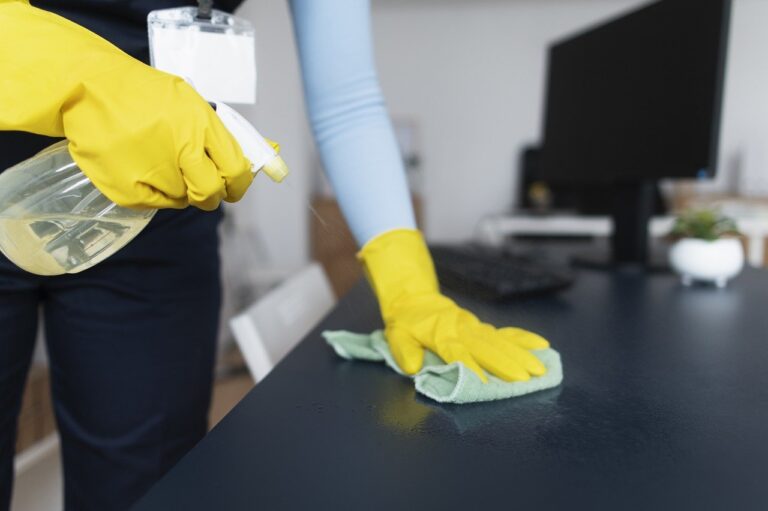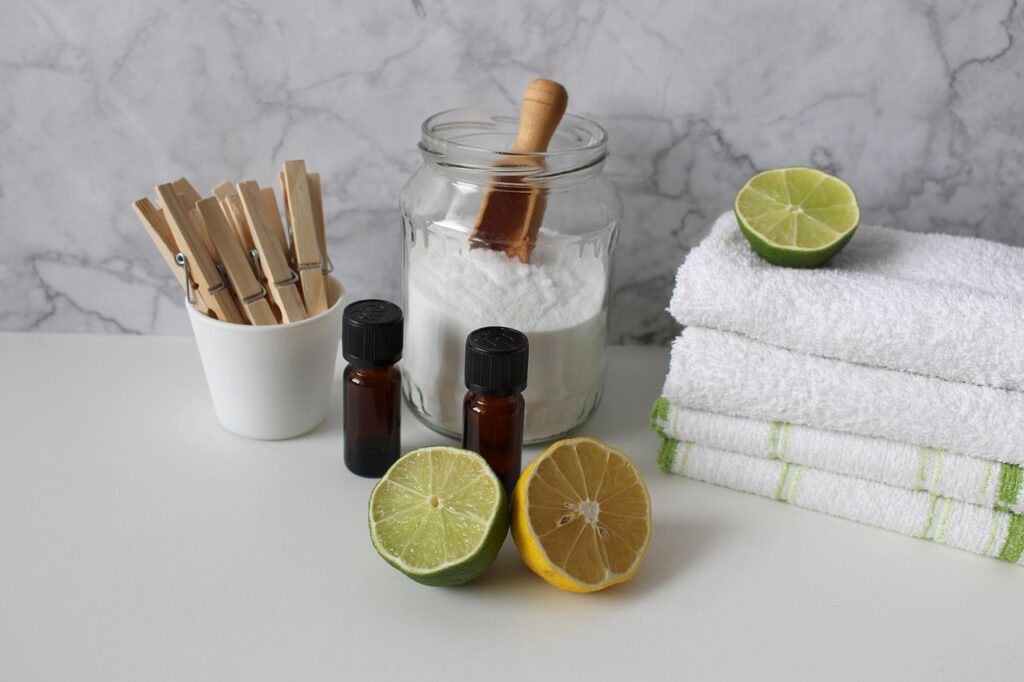Tackle the Kitchen: A Step-by-Step Guide to a Spotless Space
The kitchen is the heart of the home. It’s where meals are prepared, families gather, and memories are made. But it’s also a space that gets messy quickly, especially after cooking. From sticky countertops to greasy stovetops, a clean kitchen not only looks great but also creates a healthier environment. Here’s your ultimate guide to tackling the kitchen and making it shine!

1. Gather Your Supplies:
Before diving into cleaning, make sure you have everything you need:
- All-purpose cleaner
- Dish soap
- Degreaser (for tough grease spots)
- Glass cleaner
- Microfiber cloths and sponges
- Baking soda and vinegar (natural cleaners)
- Scrub brushes
- Trash bags
2. Declutter First:
Start by clearing your counters. Remove appliances, dishes, and any food items that are out of place. Place dirty dishes in the sink or dishwasher, and take out any trash. A clean slate will make the cleaning process smoother and more efficient.
3. Clean the Dishes:
Start with the dishes! It’s the foundation of a tidy kitchen. Wash them by hand or run them through the dishwasher, depending on what works for you. Don’t forget to clean any dirty pots, pans, and utensils used in cooking. Once they’re clean, dry and store them neatly.
4. Tackle the Countertops
Once your counters are free from clutter, it’s time to clean them. Use an all-purpose cleaner or a natural option like vinegar diluted with water. Wipe down the surfaces with a microfiber cloth to pick up dirt, crumbs, and spills. Pay extra attention to corners, where grime tends to hide.

5. Clean the Stovetop and Oven:
Stovetop: Grease buildup on the stove can be tough to clean. Use a degreaser or a mixture of baking soda and water for tough spots. Let it sit for a few minutes before scrubbing with a sponge or brush.
Oven: If your oven has spills or grease, use an oven cleaner or a homemade paste made from baking soda and water. Let it sit overnight for deep cleaning, then scrub away.
6. Wipe Down the Fridge:
Empty the fridge of expired food, containers, and leftovers. Wipe down shelves with warm, soapy water or a mixture of vinegar and water. Don’t forget the door seals, where dirt and crumbs can accumulate. Once the fridge is clean, reorganize it, placing new items in the back and older items in front.
7. Clean the Sink:
Your kitchen sink can accumulate grime, food scraps, and even bacteria. Scrub it with a non-abrasive cleaner or a mixture of baking soda and water. Clean the faucet and handles, ensuring all areas are free from soap scum and hard water stains. If you have a garbage disposal, run it with some lemon or baking soda for a fresh scent.
8. Sweep and Mop the Floor:
Start by sweeping the kitchen floor to remove crumbs and dirt. Then mop with a floor cleaner appropriate for your type of flooring (wood, tile, or laminate). Be sure to clean under the table and in any hard-to-reach spots. Once finished, let the floor dry before walking on it to avoid footprints.
9. Focus on Cabinets and Drawers:
Wipe down the outside of all cabinets and drawers with a damp cloth. For stubborn grease spots, use a degreaser. If your cabinet interiors need attention, empty them out and wipe the surfaces clean. This is also a great time to reorganize and discard unused items.
Final Thoughts:
A clean kitchen can make all the difference in how your space feels and functions. By following these simple steps, you can turn your kitchen into a clean, organized, and inviting place. Not only will you enjoy cooking more, but you’ll also be creating a healthier environment for your family. So, roll up your sleeves and get ready to tackle the kitchen — it’s worth the effort!





